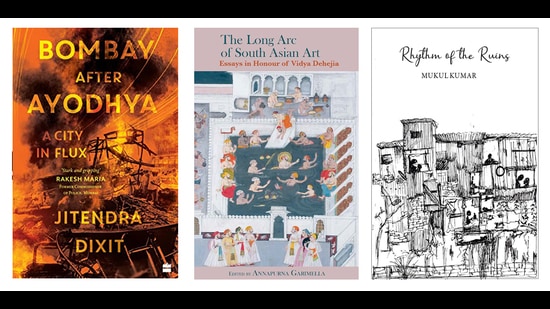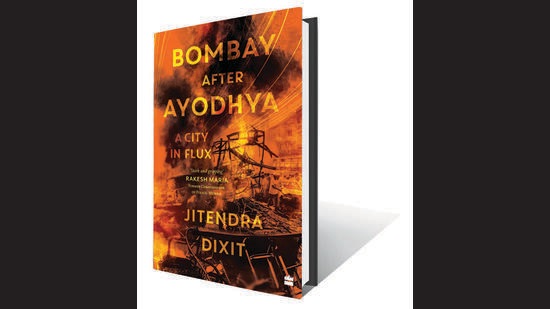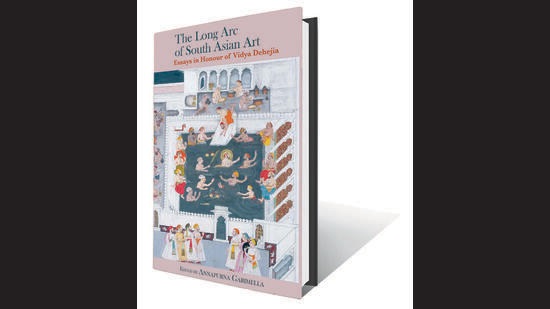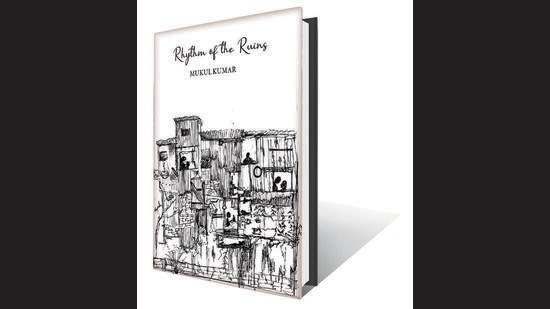HT Picks; New Reads
This week’s reading list includes a book that examines the last three decades of great change in Mumbai, 22 essays that comprise a tribute to a pioneering art historian, and a collection of poems
A city in flux


The demolition of the Babri Masjid in Ayodhya on 6 December 1992 was followed by riots across India. Mumbai had always been susceptible to communal violence, but the violence in December 1992 and then again in January 1993 was unprecedented. Two months later, in March, serial blasts rocked the city, killing over 250 and injuring 700. Communal strife was followed by gang wars and natural calamities, all of which changed the city forever.
Bombay after Ayodhya chronicles how the past three decades have been a period of unprecedented flux in Mumbai. In the aftermath of the riots, a split in the Mumbai underworld led to new equations in politics, which changed the demography of the city and led to the rise of new townships. After a brief lull, blasts and terrorist attacks rocked it once more in 2002, a cycle of violence that culminated in the horrific 26/11 attacks in 2008.
Jitendra Dixit grew up in Mumbai and has reported from the city for much of the three decades he writes about in this book. This is a deeply felt biography of a city, which has transformed from a city of mills to one of malls, where the number of skyscrapers has multiplied along with their height, where local trains have become longer and yet remained overcrowded. It is the city of Bollywood, yet constraints of producing films in the city have led filmmakers to move out. Its iconic festivals, such as Ganesh Utsav and Govinda, once primarily celebrated by the poor and the middle class, have become commercialized.
Along with key events and people that have shaped the evolution of present-day Mumbai, Bombay after Ayodhya also documents the change in the city’s character, from its physical appearance and civic issues, to real estate and politics.*
Essays in honour of Vidya Dehejia

The long arc of art historical enquiry in the Indian subcontinent spans several centuries, and virtually all the arts, from temple architecture and sculpture to the striking of coins.
The 22 essays in this volume, a tribute to the pioneering work of Vidya Dehejia, cover ancient Buddhist architecture, temple design and construction, Rajput and Mughal paintings and manuscripts, colonial-era photography, ornament, and museology.
Each author traverses or furthers a field that Dehejia herself may have opened up for examination, moving beyond contemporary conceptual questions in art history and offering fascinating insights into, for example, Indo-Roman trade and the Dakshinapatha, or the Indic carvings of Quanzhou; the transformation of the body through ritual discipline, or physical attribution; colonial representations of the “native subject” and what they reveal about the colonising project. The volume’s eclecticism extends to questions of materiality and agency; the politics and aesthetics of archaeological restoration; and the forming of divinity by human makers.
The contributors, thus, not only refer to Dehejia’s vast art historical canvas, they situate their rich archival research and fieldwork such as to contribute to the very framing of conceptual issues that she raised; and to current scholarship in the field.*
Of enchantment and hideousness

Poetry is truly said to be the rhythmical creation of beauty, a beauty that emanates from enchantment and hideousness, ecstasy and agony, castles and ruins. But the redemptive bliss from the poetic phenomenon of ruins assuming rhythm is a divine experience. As he presents this work, Mukul Kumar’s sensibility rings with the words of Oscar Wilde -- “The artist is the creator of beautiful things... No great artist ever sees things as they really are. If he did, he would cease to be an artist”.
Mukul Kumar is a civil servant, novelist and poet. A 1997 batch Indian Railway Traffic Service officer, he studied Humanities at Delhi University and Public Administration at Indian Institute of Public Administration, New Delhi. His published works include three novels, As Boys Become Men, Seduction by Truth and Aarzo-Arshan, and two poetry anthologies, The Irrepressible Echoes and Catharsis. Rhythm of the Ruins is his third poetry collection.*
*All copy from book flap.





